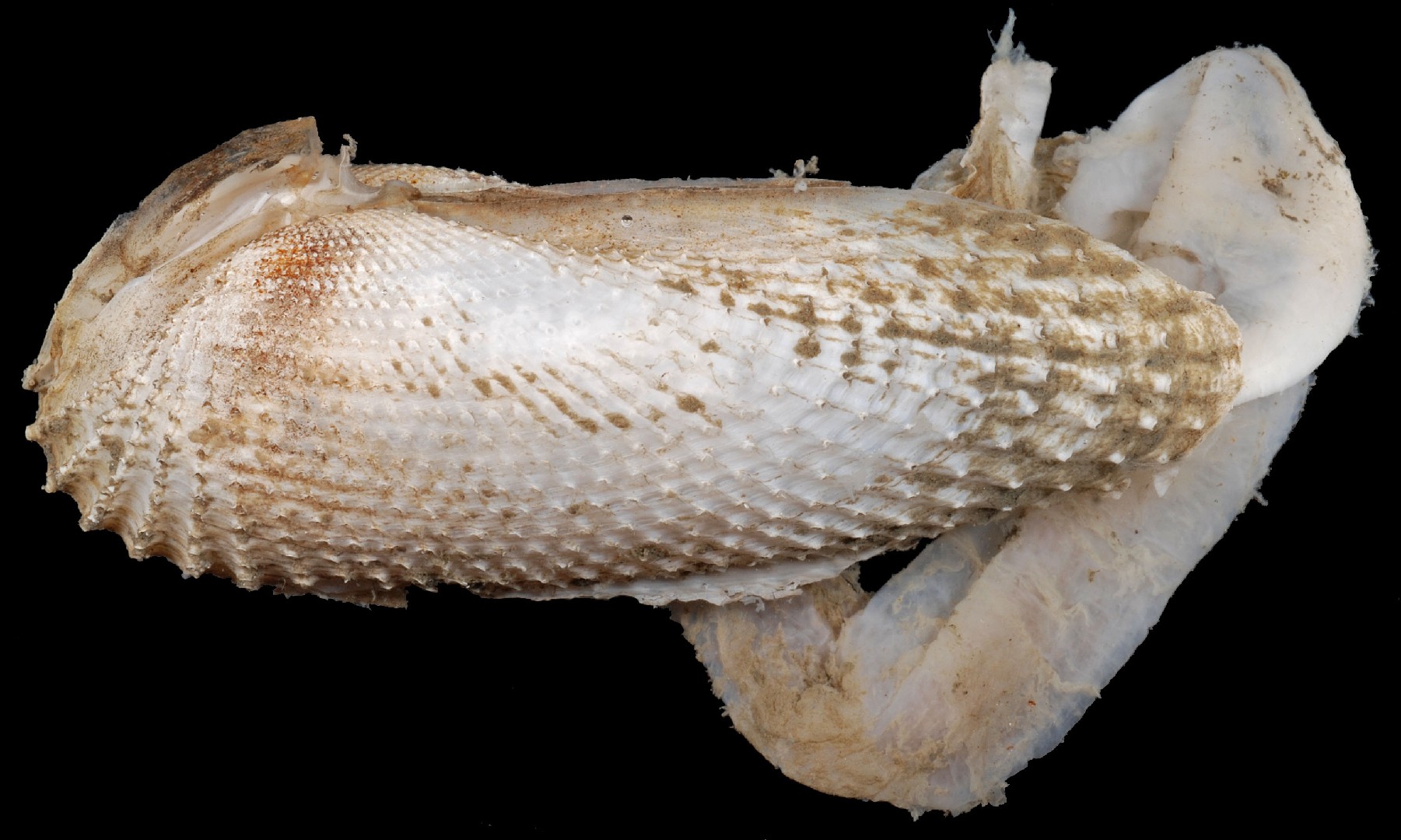Angel wing clam
A species of Cyrtopleura Scientific name : Cyrtopleura costata Genus : Cyrtopleura
Angel wing clam, A species of Cyrtopleura
Botanical name: Cyrtopleura costata
Genus: Cyrtopleura
Content
Description
 Photo By Smithsonian Environmental Research Center , used under CC-BY-2.0 /Cropped and compressed from original
Photo By Smithsonian Environmental Research Center , used under CC-BY-2.0 /Cropped and compressed from original Description
Cyrtopleura costata has a pair of brittle, asymmetric white valves and can grow to about 7 inches (180 mm) in length. The anterior end is elongated and has a rounded point which is used for digging through the substrate. The posterior end is truncated and rounded and near the beak has an apophysis, a wing-like flange, which helps provide an attachment for the foot muscles. On the anterior side of the beak, the margin is smooth and bent slightly upwards. The whole valve has finely sculptured radial ribs which intercept with a series of concentric growth rings parallel with the margin. In the living animal, the valves are covered by the periostracum, a thin grey protective layer of protein which is part of the shell. This layer has usually been stripped away by sand and surf by the time that the empty shells are washed up on the beach, and the valves are usually found singly, because the muscles that hold them together are weak. Internally, the live mollusc has a powerful muscular foot and a pair of long, fused siphons. These siphons are unable to retract back into the shell and as a result, the two valves permanently gape apart.
* Disclaimer: The judgment on toxicity and danger is for reference only. We DO NOT GUARANTEE any accuracy of such judgment. Therefore, you SHALL NOT rely on such judgment. It is IMPORTANT TO SEEK PROFESSIONAL ADVICE in advance when necessary.

 Photo By Smithsonian Environmental Research Center , used under CC-BY-2.0 /Cropped and compressed from original
Photo By Smithsonian Environmental Research Center , used under CC-BY-2.0 /Cropped and compressed from original Scientific Classification
Phylum
Molluscs Class
Bivalve shell Order
Myida Family
Piddocks Genus
Cyrtopleura Species
Angel wing clam